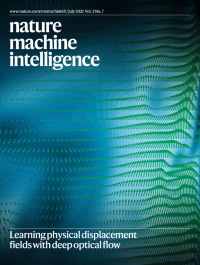投稿信息
稿件收录要求
Aims and scope
npj Digital Medicine is an online open-access journal dedicated to publishing high quality peer-reviewed research in all aspects of digital medicine including the clinical implementation of digital and mobile technologies, virtual healthcare, data analytic methodologies and innovative sensor development to provide the necessary data and longitudinal monitoring to best inform the broadest medical community. The journal aims to guide innovation and the transformation of health and healthcare through the incorporation of novel digital and mobile technologies.
Article
An Article is a substantial research study, with a complex story often involving several techniques or approaches. The main text (excluding abstract, Methods, references and figure legends) is typically no more than 4,000-4,500 words. The abstract is typically 150 words, unreferenced. Articles have up to 10 display items (figures and/or tables). An Introduction section is followed by sections headed Results, Discussion, Methods and Data Availability. The Results and Methods should be divided by topical subheadings; the Discussion may contain subheadings at the editors' discretion. As a guideline, Articles have around 60 references.
Articles include received and accepted dates. They may be accompanied by supplementary information. Articles are peer reviewed.
Brief Communication
A Brief Communication reports a concise study of high quality and broad interest. Brief Communications begin with a brief unreferenced abstract (3 sentences, usually no more than 70 words). The main text is typically 1,000-1,500 words, including abstract, references and figure legends, and contains no headings. Brief Communications normally have no more than 2 display items, although this may be flexible at the discretion of the editor. Brief Communications include a Methods and Data Availability section. As a guideline, Brief Communications have around 20 references.
Brief Communications include received and accepted dates. They may be accompanied by supplementary information. Brief Communications are peer reviewed.
Comment
Comment is a very flexible format; Comments may be on policy, science and society or purely scientific issues. The main criteria are that they should be of immediate interest to a broad readership and should be written in an accessible, non-technical style. Their length is typically 1,000-2,000 words. Because the content is variable, the format is also flexible. Comments do not normally contain primary research data, although they may present 'sociological' data (funding trends, demographics, bibliographic data, etc.). References typically do not exceed 25.
Comments include received and accepted dates. Comments are typically peer reviewed.
Editorial
Editorials are written by the senior editorial team of the journal, under the direction of the Editor-in-Chief. They are not typically peer reviewed, although they can be at the discretion of the editorial team, and are published with received and accepted dates.
Matters Arising
Important scientific comments and clarifications on peer-reviewed articles published in npj Digital Medicine may be submitted as Matters Arising. The guidelines for Matters Arising are outlined here.
Perspective
Perspective is a format for scholarly reviews and discussions of the primary research literature that are too technical for a Commentary but do not meet the criteria for a Review—either because the scope is too narrow, or because the author is advocating a controversial position or a speculative hypothesis or discussing work primarily from one group. Two reviews advocating opposite sides in a research controversy are normally published as Perspectives. The text should not normally exceed 3,000 words. As a guideline, Perspectives allow up to 70 references.
Perspectives are always peer reviewed and include received and accepted dates.
Protocol
Protocol is a format for step-by-step descriptions of procedures that users can take to the lab or clinic and immediately apply in their own research. Each Protocol should contain information about software or hardware development, participant recruitment, outcome reporting and application of the methods. The Protocol should include ethical considerations, timing information and step-by-step instructions for performing the experiment (with critical steps and cautions highlighted) as well as information on adapting the technique, its advantages and limitations compared to alternatives, troubleshooting, analyzing data, interpreting results and data sharing.
Protocols are always peer reviewed and include received and accepted dates.
Review
A Review is an authoritative, balanced and scholarly survey of recent developments in a research field. The requirement for balance need not prevent authors from proposing a specific viewpoint, but if there are controversies in the field, the authors must treat them in an even-handed way. Reviews are normally 3,000-4,000 words, and illustrations are strongly encouraged. References are typically limited to 100, with exceptions possible. Citations should be selective. The scope of a Review should be broad enough that it is not dominated by the work of a single laboratory, and particularly not by the authors' own work.
Reviews include received and accepted dates. Reviews are always peer reviewed.




